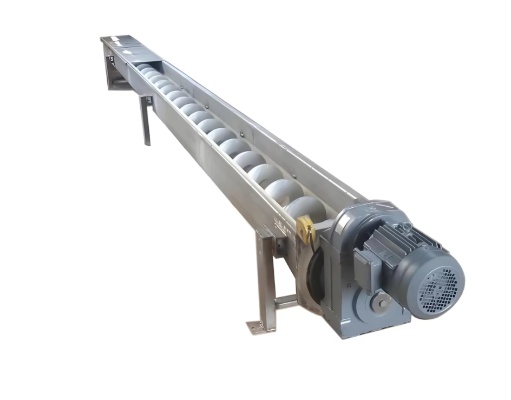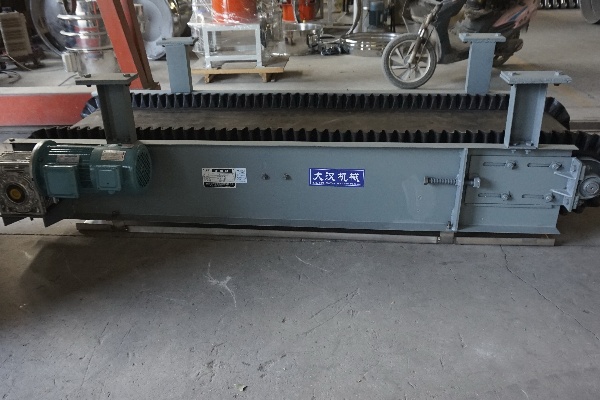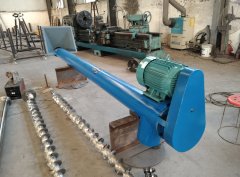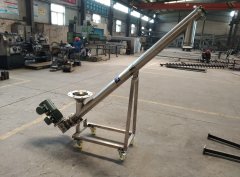The difference between Kitchen waste screw conveyor and shaft screw conveyor
Tuesday July-01 2025 17:41:05
Kitchen waste screw conveyor and shaft screw conveyor are both types of screw conveyors. Due to the unique properties of food waste (such as viscosity, high water content, easy entanglement, complex composition, etc.), shaftless screw conveyors are usually a better choice when handling such materials. There are differences in design and construction, applicable material characteristics, and operation and maintenance compared with shaft screw conveyors. In practical applications, especially for materials of different properties, it is crucial to choose the right type of conveyor.

What are the differences between Kitchen waste screw conveyor and shaft screw conveyor?
The following are the main differences between Kitchen waste screw conveyor (usually refers to shaftless screw conveyor) and shaft screw conveyor:
Structural differencesShaft screw conveyor:
Core structure: There is a solid or hollow shaft in the middle, and the spiral blades are fixed to this shaft.
Support method: The spiral shaft is supported by bearings at both ends and hanging bearings in the middle (if the conveying distance is long).
Cross-sectional shape: U-shaped groove or tubular shell is usually used.
Spiral blades: thinner and fixed to the shaft.
Kitchen waste screw conveyor (shaftless screw conveyor):
Core structure: There is no central shaft, only a thick, flexible spiral blade rotating in a U-shaped groove.
Support method: The spiral blade slides directly on the liner (usually made of wear-resistant materials such as ultra-high molecular weight polyethylene), supported and driven by the connection point at the drive end.
Cross-sectional shape: Usually a U-shaped groove is used to allow more space for the spiral blade.
Spiral blade: Thicker, stronger, and without the limitation of the central shaft, it can be made wider.
Shafted screw conveyor: Suitable for conveying dry, granular, powdery, fluid, and non-entangled materials, such as grains, cement, coal powder, sand, small particle materials, etc. If viscous or entangled materials are conveyed, it is easy to get blocked and adhere to the spiral shaft and blades, affecting the conveying efficiency and even damaging the equipment.
Kitchen waste screw conveyor (shaftless screw conveyor): Suitable for conveying materials with strong viscosity, high water content, easy to entangle, blocky, and fibrous materials, such as kitchen waste, sludge, fruit and vegetable residues, etc. The shaftless design eliminates the obstruction of the central shaft to the material, avoids the problem of material entanglement and blockage, and improves the conveying efficiency.
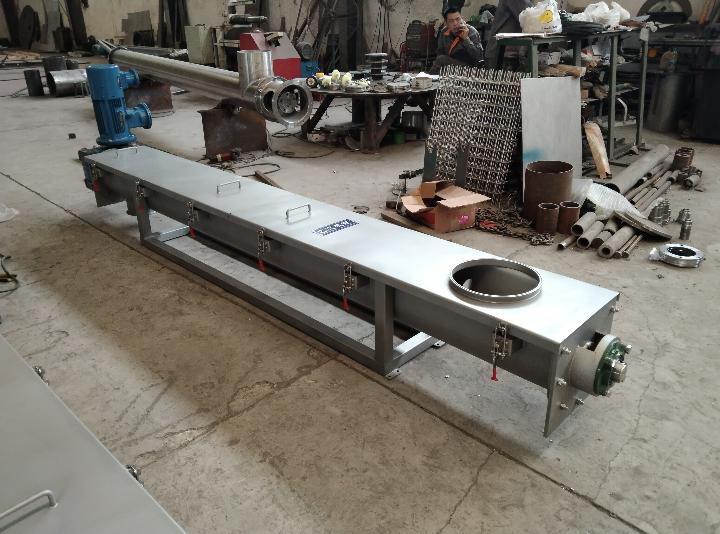
Shafted screw conveyor: Due to the presence of the central shaft and hanging bearings, materials may be blocked or accumulated at these locations during the conveying process, especially when conveying viscous materials. The filling rate (the volume percentage occupied by the material in the trough) is usually low, generally around 15%-30%.
Kitchen waste screw conveyor (shaftless screw conveyor): The design without a central shaft makes material conveying smoother and less prone to blockage and entanglement. A higher filling rate can be achieved, usually around 35%-40%, and even up to 100% in some applications, so the conveying volume is larger and the efficiency is higher.
Through the above analysis of the structure and material adaptability of Kitchen waste screw conveyor (shaftless screw conveyor) and shaft screw conveyor, it can be seen that there are significant differences in the design concepts of the two. Shaft screw conveyor is suitable for conveying conventional materials with good fluidity and not easy to entangle, and its structure is relatively compact. Kitchen waste screw conveyor is optimized for special materials with high viscosity, easy to entangle, and high moisture content. Its design without center shaft effectively avoids material accumulation and stagnation.
